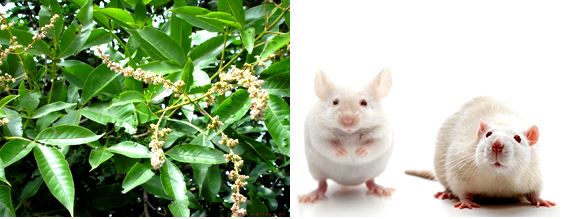ANTIHYPERGLYCEMIC AND ANTI-OXIDANT POTENTIAL OF ETHANOL EXTRACT OF VITEX THYRSIFLORA LEAVES ON DIABETIC RATS
Keywords:
antihyperglycemic, antioxidant, diabetic rats, Vitex thyrsifloraAbstract
Objective: Vitex thyrsiflora Baker (Verbenaceae) is a glabrous under shrub that is widely distributed in Cameroon. Diabetes is characterized by chronic hyperglycemia, a source of increased oxidative stress and tissue oxidative damage. The objective of current study was to estimate the antihyperglycemic and anti-oxidant potential of ethanol extract of Vitex thyrsiflora leaves on diabetic rats
Methods: The antihyperglycemic effect of an ethanol extract of Vitex thyrsiflora leaves was investigated in normal male rats and streptozotocin induced diabetic male rats and its antioxidant potential was evaluated. After preparation of the extract, it was subjected to a phytochemistry screening, and tested on male rats made hyperglycemic in the Oral Glucose Tolerance Test (OGTT) and in streptozotocin diabetic rats. Glibenclamide (10 mg/Kg) was served as a positive control in both experiments. The evaluation of the antioxidant potential was done through the determination of the total polyphenols and total flavonoid contents, and by using the ferric reducing antioxidant power assay and the free radical scavenging activity on DPPH method.
Results: The results show that the extract contains alkaloids, flavonoids, steroids, saponins and phenolic compounds. The test on hyperglycemic rats in OGTT showed that, the extract was effective (at a dose of 200 mg/Kg) to significantly decreased glucose-induced hyperglycemia (**p ˂ 0.01). The extract was ineffective on streptozotocin induced diabetic rats. The study of the antioxidant potential showed that, polyphenols and flavonoids increase with the concentration of the extracts. IC50 value was found to be 65.97, based on the log (inhibitor) vs. normalized response-Variable slope.
Conclusion: FRAP appears to be significantly highly correlated with total polyphenols content and total flavonoids content. This shows that the ethanol extract of V. thyrsiflora leaves could be served to prevent acute hyperglycema, but not a chronic hyperglycemic state.
Peer Review History:
Received 8 April 2018; Revised 10 May; Accepted 12 June; Available online 15 July 2018
Academic Editor: Dr. Gehan Fawzy Abdel Raoof Kandeel , Pharmacognosy Department, National Research Centre, Dokki, 12622, Giza, Egypt, gehankandeel9@yahoo.com
, Pharmacognosy Department, National Research Centre, Dokki, 12622, Giza, Egypt, gehankandeel9@yahoo.com
Reviewer(s) detail:
Dr. Sabah Hussien El-Ghaiesh , Tanta University, Egypt, s.ghaiesh@gmail.com
, Tanta University, Egypt, s.ghaiesh@gmail.com
Prof. Dr. Ali Gamal Ahmed Al-kaf , Sana'a university, Yemen, alialkaf21@gmail.com
, Sana'a university, Yemen, alialkaf21@gmail.com
Downloads

Published
How to Cite
Issue
Section

This work is licensed under a Creative Commons Attribution-NonCommercial 4.0 International License.










 .
.